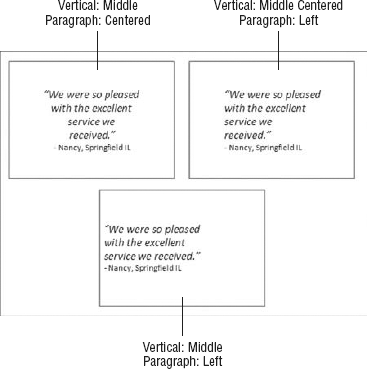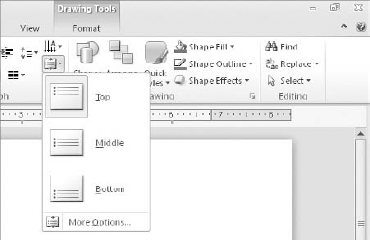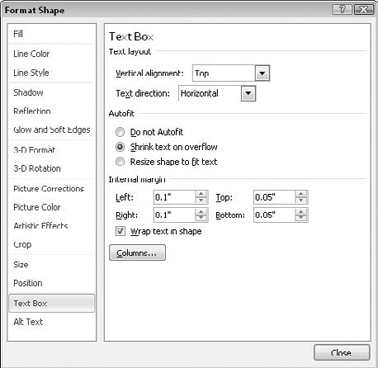3. Controlling Vertical Alignment
The vertical alignment is the positioning of the text
vertically within the text box. The default vertical alignment is Top,
which means that if there is extra space in the text box, it congregates
at the bottom.
For the main text placeholders in a presentation, Top
alignment is usually the best because it prevents the first line of
text on each slide from looking like it is inconsistently placed.
However, for a manual text box on an individual slide, Middle alignment
often looks better, especially in a text box that has an outline or fill
defined.
You can choose Top, Middle, or Bottom alignment, or
centered versions of each (Top Centered, Middle Centered, or Bottom
Centered). The centered versions center the text horizontally within the
text box, but it's not the same thing as horizontal alignment on a
paragraph level. The text remains left-aligned with itself, but it
scoots over to the center of the text box. Figure 6 shows the difference.
If you want one of the basic three alignments, click
Align Text in the Paragraph group on the Home tab and select Top,
Middle, or Bottom, as shown in Figure 7.
If you want one of the centered-type alignments, you must use the Paragraph dialog box. Follow these steps:
Right-click
the text box and choose Format Shape to open the Format Shape dialog
box or choose More Options at the bottom of the Align Text button's
menu. (ES)
In the Text Layout section, choose a Vertical Alignment setting. See Figure 8.
In the AutoFit section, choose Do Not AutoFit or Shrink Text on Overflow.



If Resize Shape to Fit Text is
selected here, the text box can't be made any taller than is necessary
to accommodate the text in it, so there will be no blank space to
allocate vertically and no difference between the vertical alignment
settings.